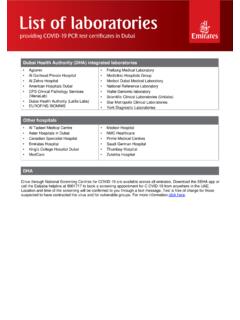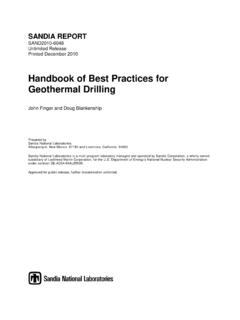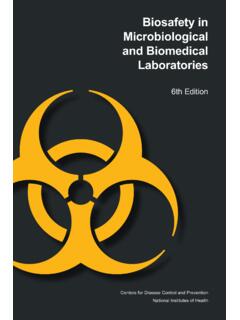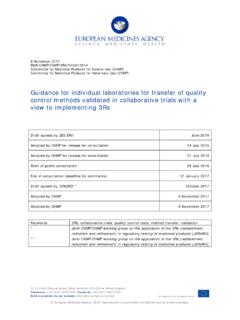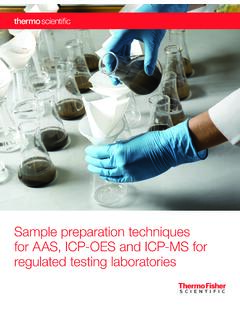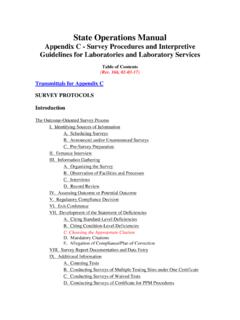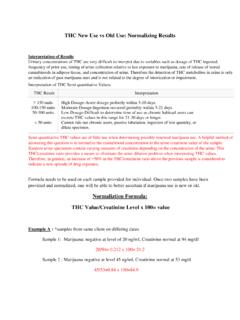Transcription of Biological agents - The principles, design and operation ...
1 Health and Safety Executive Biological agents The principles, design and operation of Containment Level 4 facilities Advisory Committee on Dangerous Pathogens Biological agents The principles, design and operation of Containment Level 4 facilities Contents PREFACE 1 PART 4: PRINCIPAL REQUIREMENTS OF. CONTAINMENT LEVEL 4 laboratories 40. LIST OF ABBREVIATIONS 4 Generic issues 41. Containment Level 4 laboratories 48. AIMS OF THIS GUIDANCE 5. PART 5: PRINCIPAL REQUIREMENTS FOR. SCOPE OF THIS GUIDANCE 6 CONTAINMENT OF ANIMALS INFECTED WITH.
2 HIGH-HAZARD PATHOGENS 57. PRINCIPLES OF CONTAINMENT 10 Definition of terms 58. Control of Substances Hazardous to Health Safe working with sharps 58. Regulations 2002 (COSHH) (as amended) 10 Disinfection and disposal procedures 58. Specified Animal Pathogens Order 1998 (SAPO) 10 Emergency procedures 59. Genetically Modified Organisms (Contained Use) Protective equipment and procedures 60. Regulations 2002 (GMO(CU)) (as amended) 11 Work with simians 61. Anti-terrorism, Crime and Security Act 2001 (ATCSA) 11. Animals (Scientific Procedures) Act 1986 (ASPA) 12 APPENDICES 62.
3 1: Fumigation 62. PART 1: HAZARD GROUP 4 PATHOGENS 15 2: Maintenance 65. Viral haemorrhagic fever viruses (VHFVs) 16 3: Emergency procedures 68. Hendra and Nipah viruses 19 4: Non-microbiological hazards 73. Herpesvirus simiae (B virus) 20. Variola (smallpox) 20 REFERENCES AND FURTHER INFORMATION 75. References 75. PART 2: HEALTH AND SAFETY MANAGEMENT IN Useful contacts 80. CONTAINMENT LEVEL 4 FACILITIES 22 Further information 81. Management responsibilities 22. Risk assessment 23. Local safety policies and codes of practice 24.
4 Staff selection, training and supervision 25. Temporary or visiting workers 27. Health surveillance 27. Record keeping 27. Emergency procedures and contingency planning 28. Incident reporting 29. PART 3: GENERAL PRINCIPLES OF design AND. operation OF CONTAINMENT LEVEL 4. FACILITIES 31. Introduction 31. General principles of design 31. Detail design and planning 32. Commissioning and validation 34. Other issues 35. Biological agents The principles, design and operation of Containment Level 4 facilities Preface In the UK, the principles and standards for working with high-hazard pathogens were originally laid down in the Advisory Committee on Dangerous Pathogens (ACDP) publication Categorisation of Biological agents (1984; revised in 1990 and 1995).
5 1 This publication set new practical standards for safe working with such agents . It had the status of guidance supporting the Health and Safety at Work etc Act 19742 (HSW Act) and the Control of Substances Hazardous to Health Regulations 1988 (COSHH, now amended). The fourth edition (1995) of Categorisation of Biological agents reflected the need to implement two new European Community Directives: the Biological agents Directive (90/679/EEC),3 which was implemented by new COSHH regulations in 1994 (revised in 2000 and 2002);4 and the second Directive, 93/88/EEC (now replaced by 2000/54/EC)3 which contained a European Community classification of Biological agents capable of causing infection.
6 This classification was implemented by means of an approved list of Biological agents and has legal status under COSHH. The ACDP has been working to revise and update the 1995 Categorisation of Biological agents guidance over the last five years. The 1995 guidance has now been replaced by three separate documents: The management, design and operation of microbiological containment laboratories HSE Books 2001,5 which is aimed at those responsible for the management and operation of Containment Level 2 and 3 (CL2 and CL3).
7 laboratories ;. Biological agents : Managing the risks in laboratories and healthcare premises HSE 2005,6 which is aimed at the healthcare sector; and Biological agents : The principles, design and operation of Containment Level 4. facilities this document, which is aimed at high-hazard containment facilities. This ACDP guidance is aimed mainly at laboratories handling pathogens that present a risk to human health under COSHH. However, genetically modified pathogens and zoonotic pathogens will also pose a potential risk to workers.
8 Some of these are covered by other regulatory schemes (eg the Genetically Modified Organisms (Contained Use) Regulations 20007 (GMO(CU)) and the Specified Animal Pathogens Order 19988 (SAPO)) that are discussed here only as far as they relate to human health. Further specific guidance on these is provided The term high-hazard pathogen', for the purpose of this document, will include those organisms categorised by: EC Directive 2000/54/EC the Community classification of Biological agents , implemented in the UK by means of an Approved List and known widely as ACDP Hazard Group 4 (HG4) agents .
9 The Department for Environment, Food and Rural Affairs (DEFRA), for administering licensing under the Specified Animal Pathogens Order 1998. 1. Biological agents The principles, design and operation of Containment Level 4 facilities (SAPO), for the purpose of protecting animal health from escape of organisms from laboratories . SAPO is administered by the Scottish Executive Environment and Rural Affairs Department (SEERAD) in Scotland and by the Office of the Chief Veterinary Officer at the Welsh Assembly Government in Wales.
10 High- hazard pathogens under this scheme are those that require bio-containment at DEFRA Containment Level 4 (CL4); and the Genetically Modified Organisms (Contained Use) Regulations 2000 (as amended) (GMO(CU)). A suitable and sufficient risk assessment under these Regulations may result in a genetically modified micro-organism (GMM) being allocated appropriate containment and control measures at GM (genetically modified) Activity Class 4. 2. Biological agents The principles, design and operation of Containment Level 4 facilities Figure 1: An overview of the relevant health and safety legislation and other guidance that should be consulted when working with Biological agents in any type of microbiological containment laboratory Primary Health and Safety at Work etc Act 19742 Animal Health Act legislation 198111.










